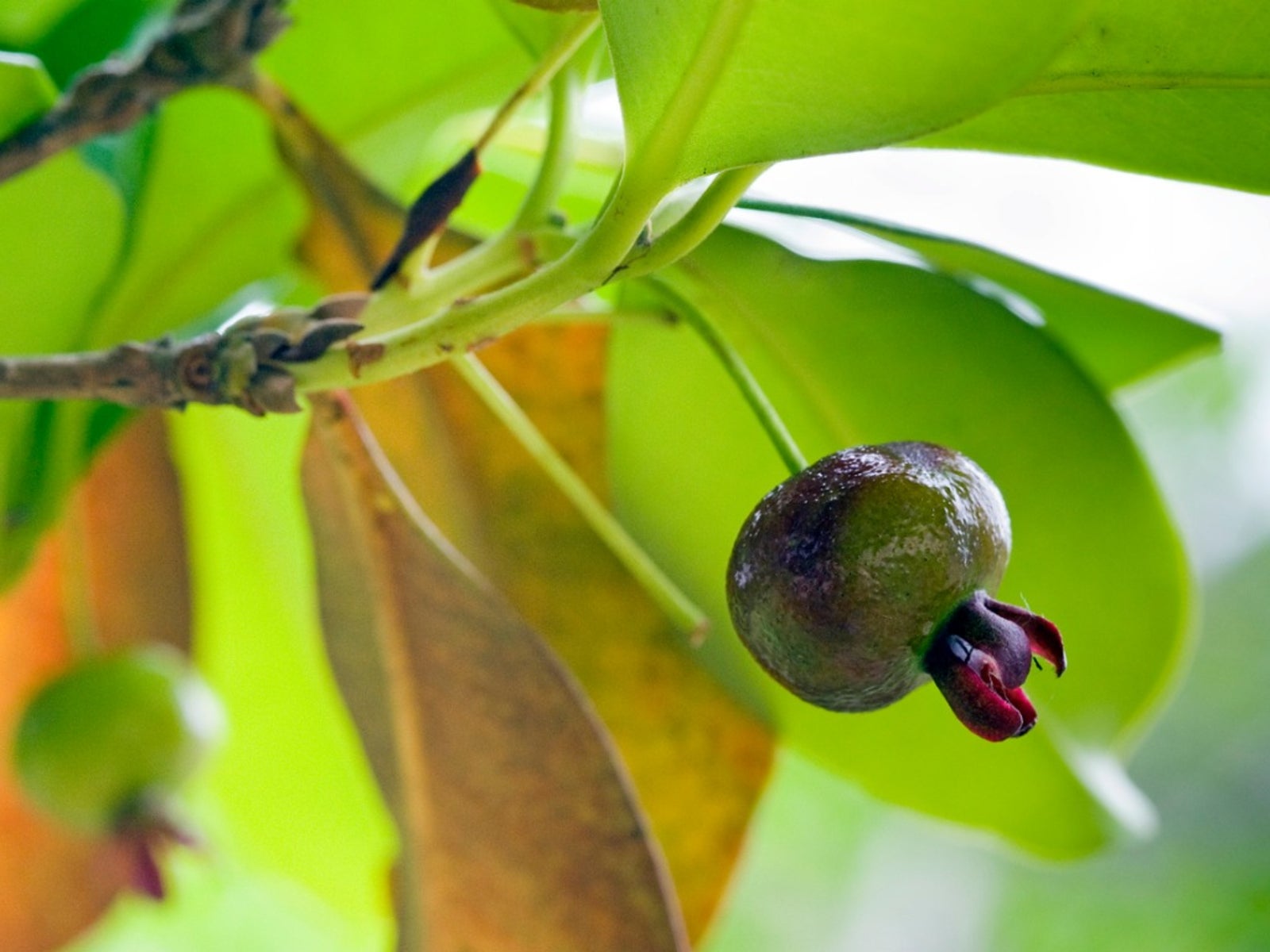Grumichama Tree Care – Learn About Growing Grumichama Cherry


Do you like the sweet, rich flavor of Bing cherries but can't grow traditional cherry trees in your central or southern Florida backyard? Like many deciduous trees, cherries require a chill period during their winter dormancy. This is the number of continuous hours the tree must spend in temperatures lower than 45 degrees F. (7 C.). Without a chill period, deciduous trees don't prosper.
If you live in an area where you can't grow traditional cherry trees, don't despair. There are a few fruiting trees in the Myrtle family which produce cherry-like berries. The Grumichama tree, with its dark purple, sweet tasting fruit is an alternative for the Bing cherry.
What is Grumichama
Also known as the Brazil cherry, this berry producing tree is native to South America. The Grumichama cherry can be cultivated in other tropical and subtropical climates, including Florida and Hawaii. Grown primarily as a backyard ornamental fruit tree, the Grumichama cherry isn't likely to garner much commercial attention due its smaller fruit size and lower fruit-to-pit ratio.
The slow growing Grumichama can take four to five years to produce fruit when the tree is started from seeds. Grumichama cherry trees can also be propagated by cuttings or grafting. The tree can reach heights of 25 to 35 feet (8 to 11 m.) but are often pruned to nine to ten feet (about 3 m.) tall or grown as a hedge to facilitate an easier harvest.
Grumichama Plant Info
USDA Hardiness Zones: 9b to 10
Soil pH: Slightly acidic 5.5 to 6.5
Growth Rate: 1 to 2 feet (31-61 cm.) per year
Gardening tips, videos, info and more delivered right to your inbox!
Sign up for the Gardening Know How newsletter today and receive a free copy of our e-book "How to Grow Delicious Tomatoes".
Bloom Time: April to May in Florida; July to December in Hawaii
Harvest Time: Fruit ripens about 30 days after blooming
Sunlight: Full to partial sun
Growing Grumichama
The Grumichama cherry can be started from seed or purchased online as a young tree. Seeds germinate in about a month. When purchasing young stock acclimate the tree to full sun conditions prior to planting to avoid leaf scorching and reduce transplant shock.
Plant young Grumichama trees in fertile, loamy acidic soil. These cherry trees prefer full sun but can tolerate light shade. When planting trees dig a broad, shallow hole so the crown of the tree remains at soil line. Seedlings, young trees, and fruiting mature trees need plenty of rain or supplemental water for growth and to prevent fruit drop.
Mature trees can tolerate light frosts. In northern climates a tree may be container grown and moved indoors during the winter. Some growers feel these trees fruit better when exposed to a slight chill period. An attached garage or unheated enclosed porch may provide adequate temperatures for winter storage.
Grumichama cherries ripen very quickly. Gardeners are advised to watch their trees closely for signs of ripening and net the tree if necessary, to protect the harvest from birds. The fruit can be eaten fresh or used for jams, jellies and pies.

Laura Miller has been gardening all her life. Holding a degree in Biology, Nutrition, and Agriculture, Laura's area of expertise is vegetables, herbs, and all things edible. She lives in Ohio.
-
 Looking For Plants To Give You The Soft And Fuzzies? Try These 5 Fuzzy Leaf Plant Options
Looking For Plants To Give You The Soft And Fuzzies? Try These 5 Fuzzy Leaf Plant OptionsLovers of texture, drama, silver foliage and tactile plants will adore these special sensory garden additions. These fuzzy leaf plant options will leave you all aglow
By Susan Albert
-
 Get Ready For A Summer Of Hummers! Grow These Full Sun Hummingbird Plants and Flowers
Get Ready For A Summer Of Hummers! Grow These Full Sun Hummingbird Plants and FlowersIf you’re lucky enough to enjoy a sunny backyard, make sure you are maxing out on your pollinator opportunities and grow these full sun hummingbird plants and flowers
By Tonya Barnett